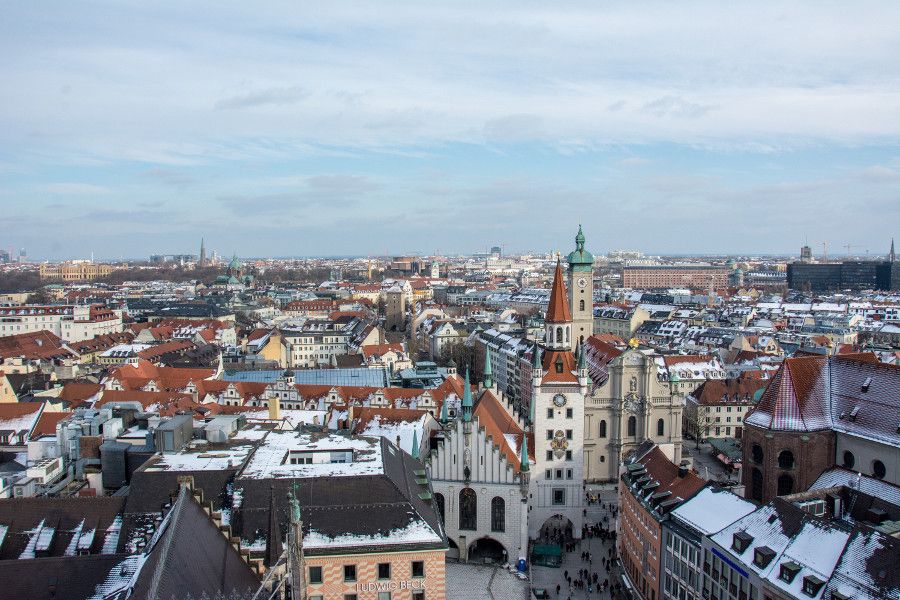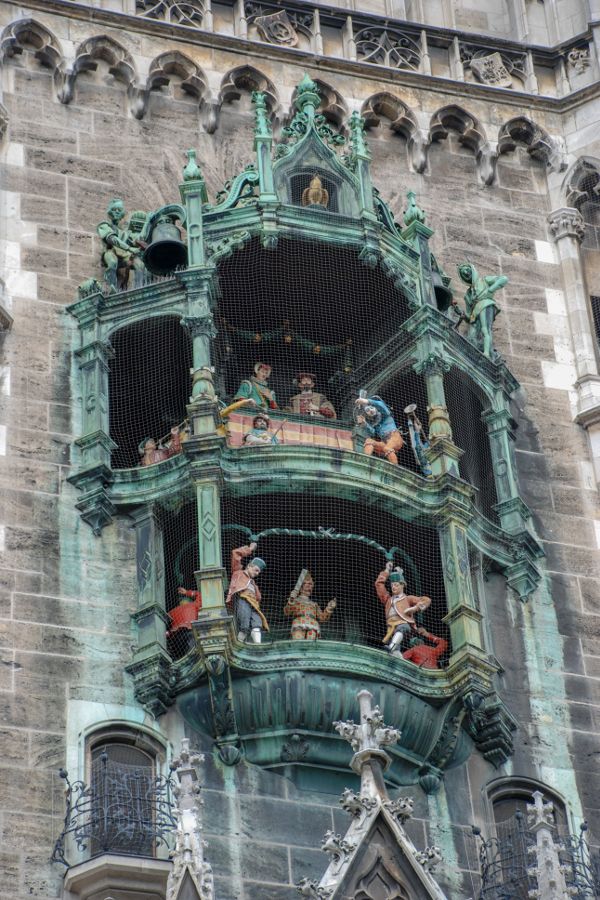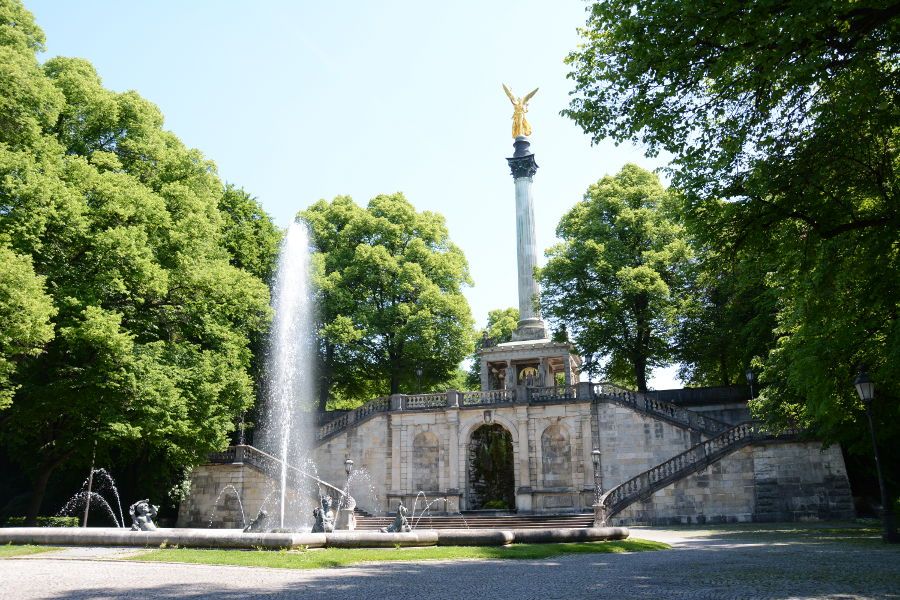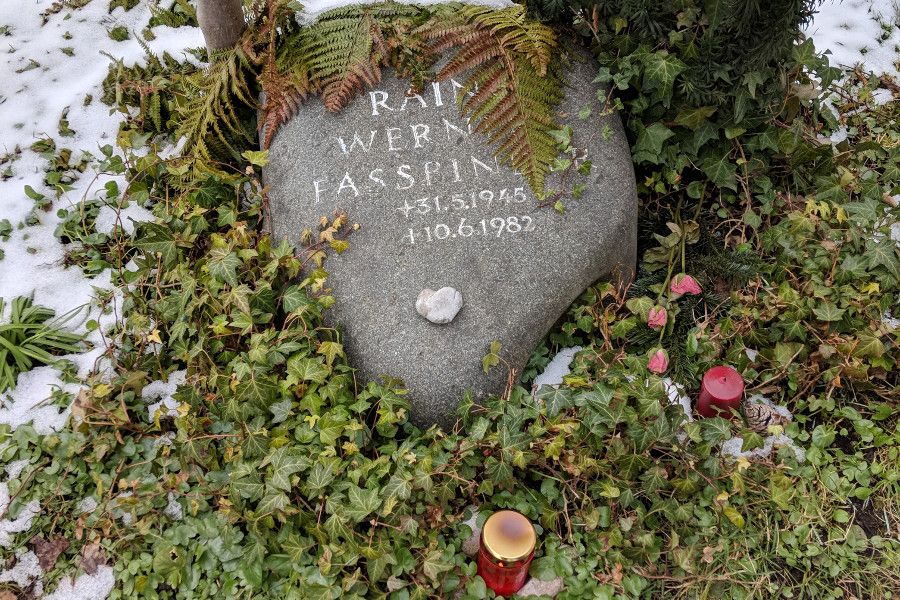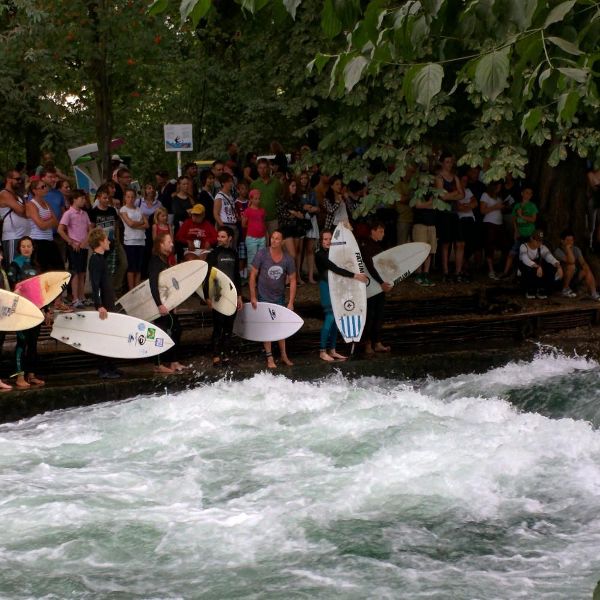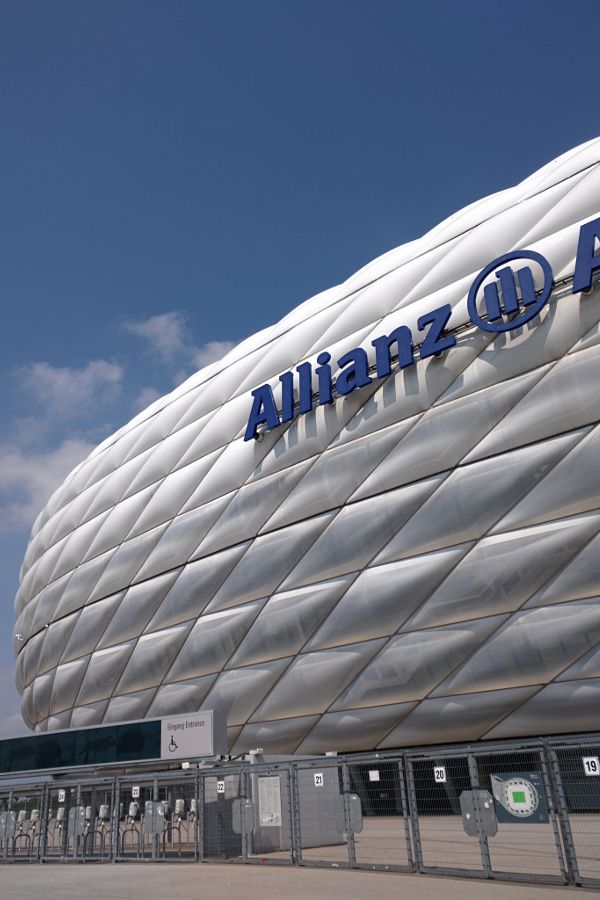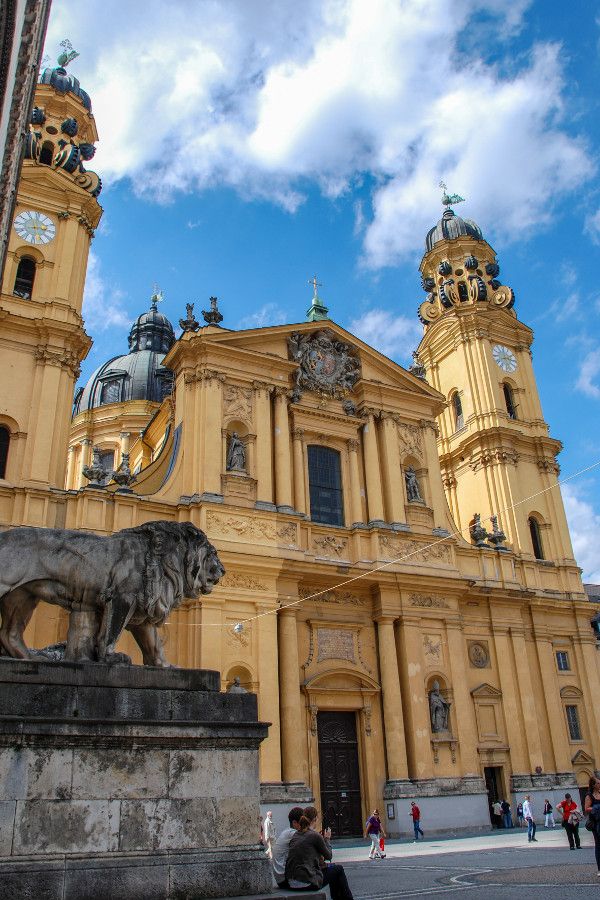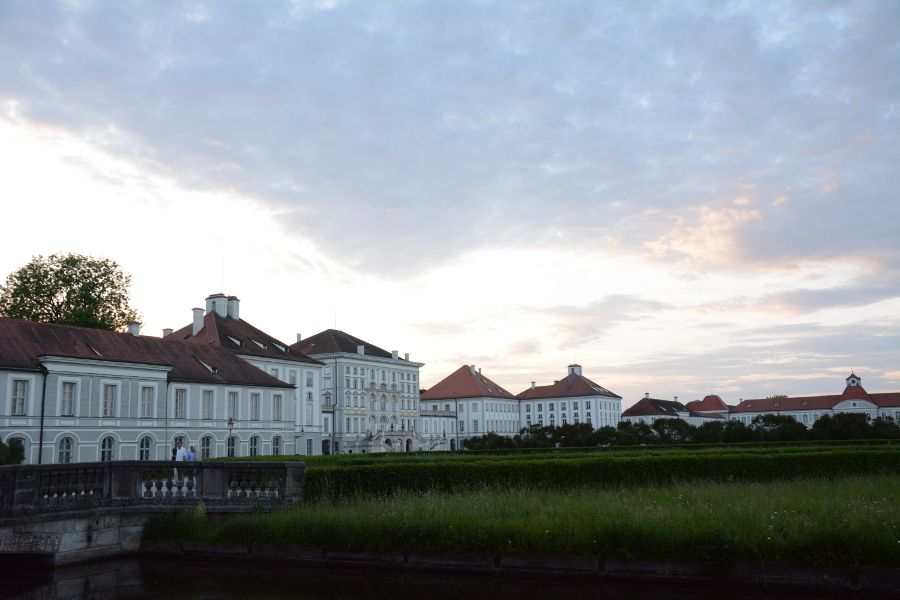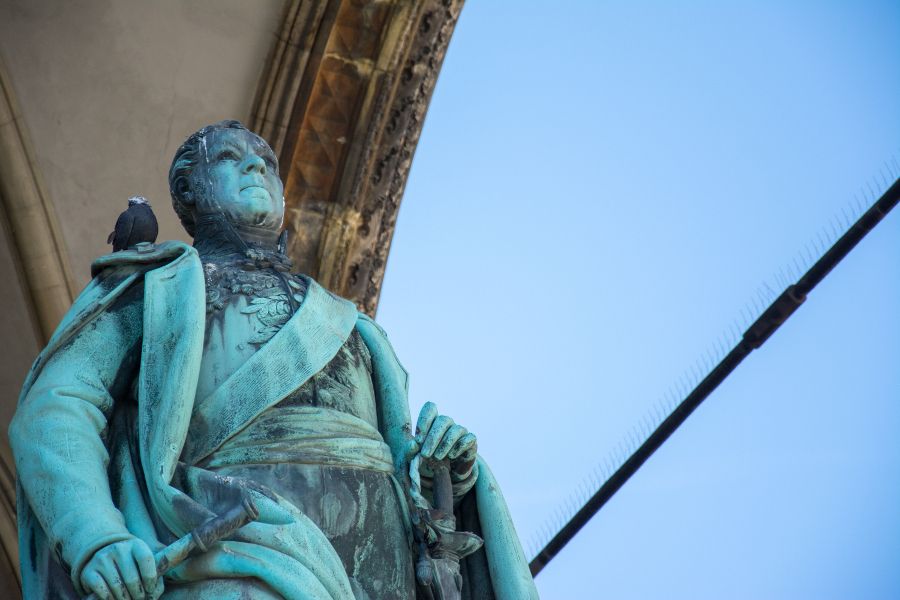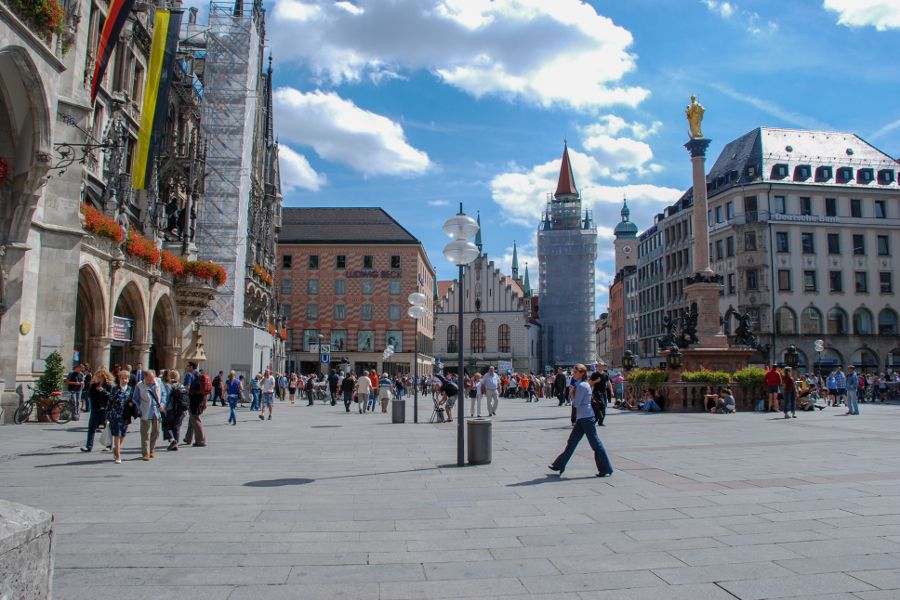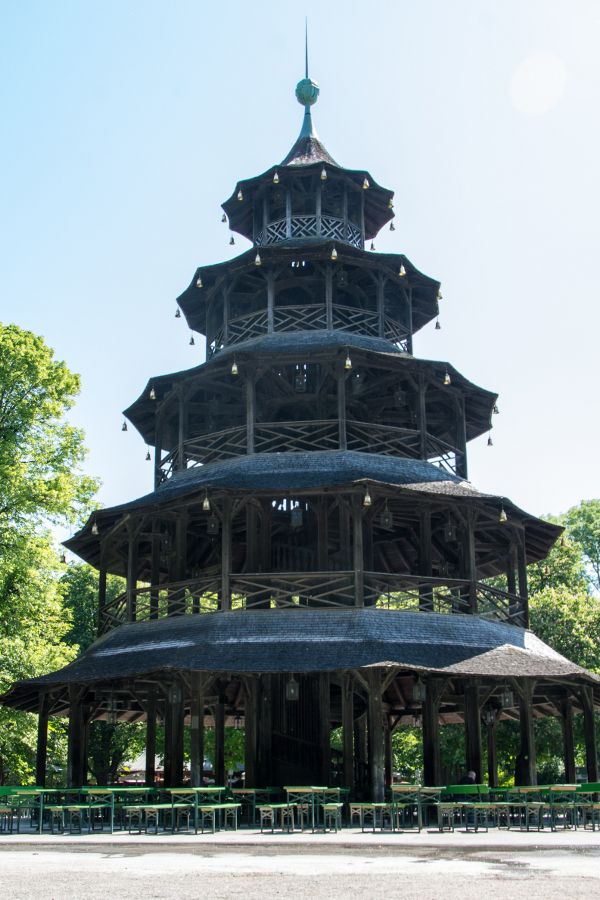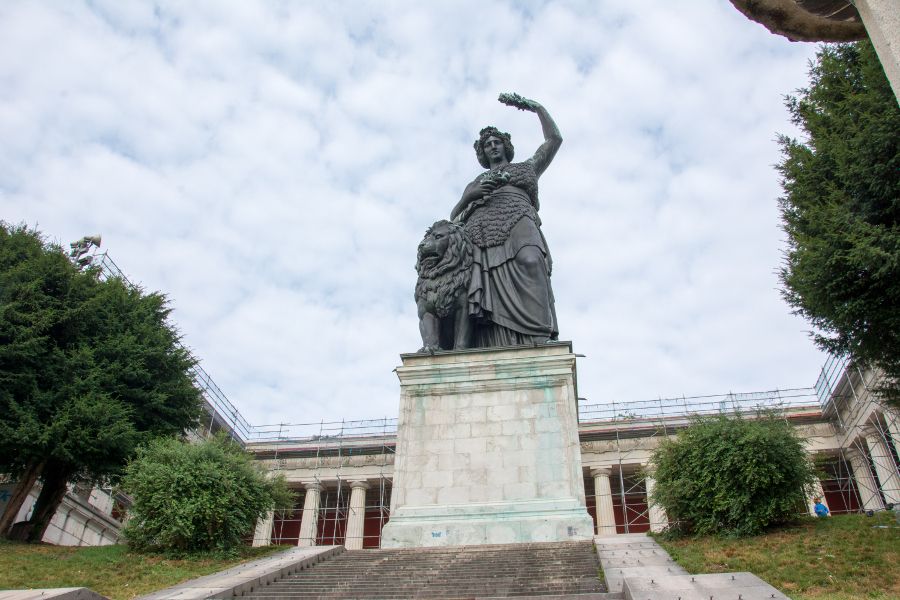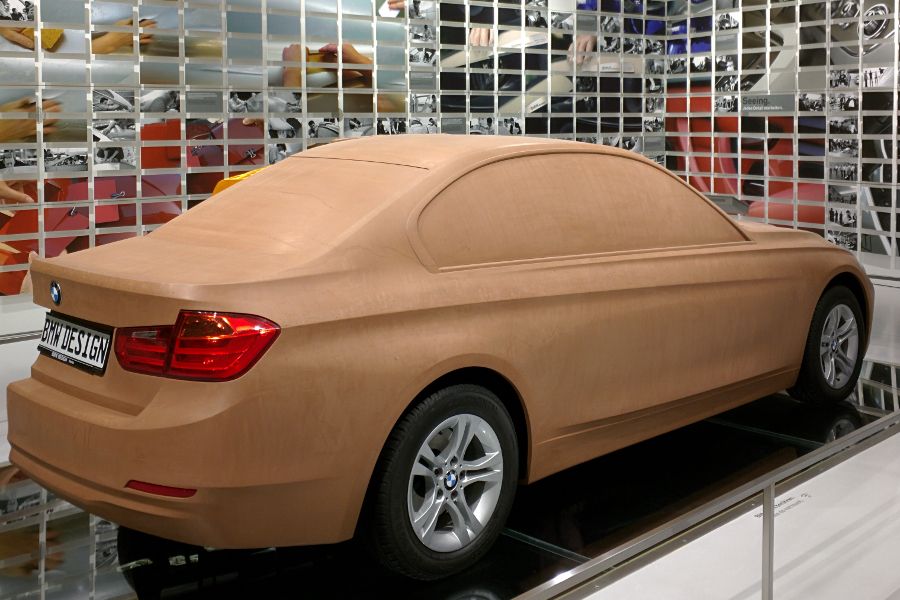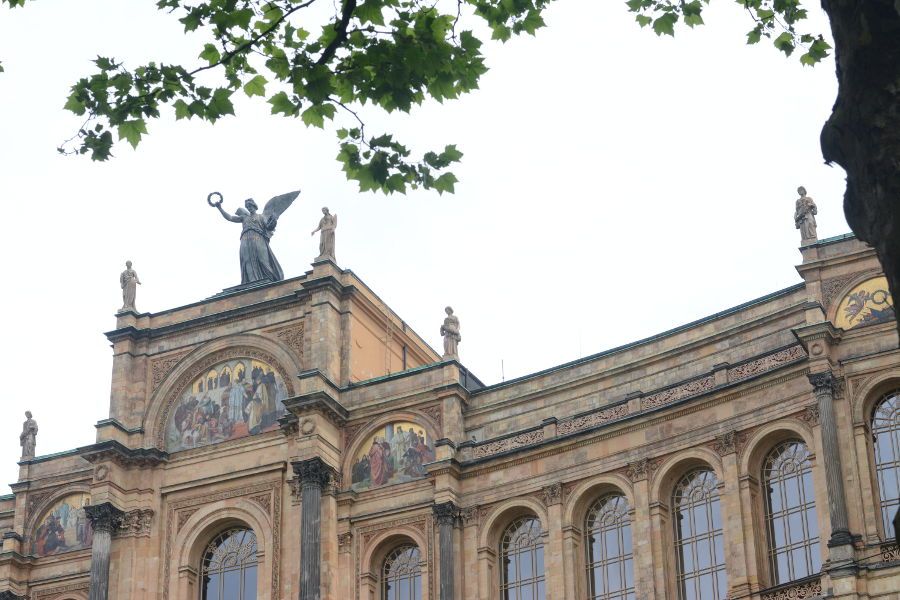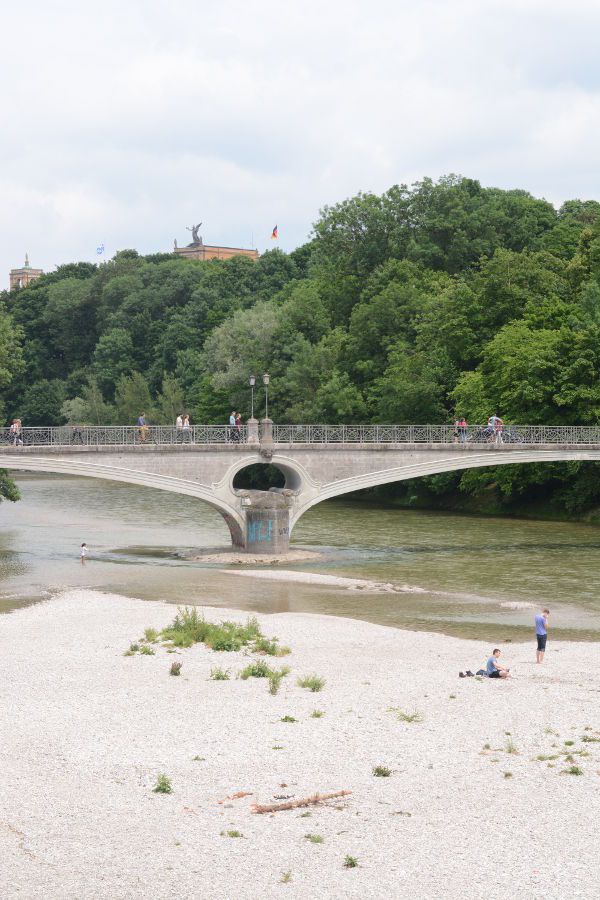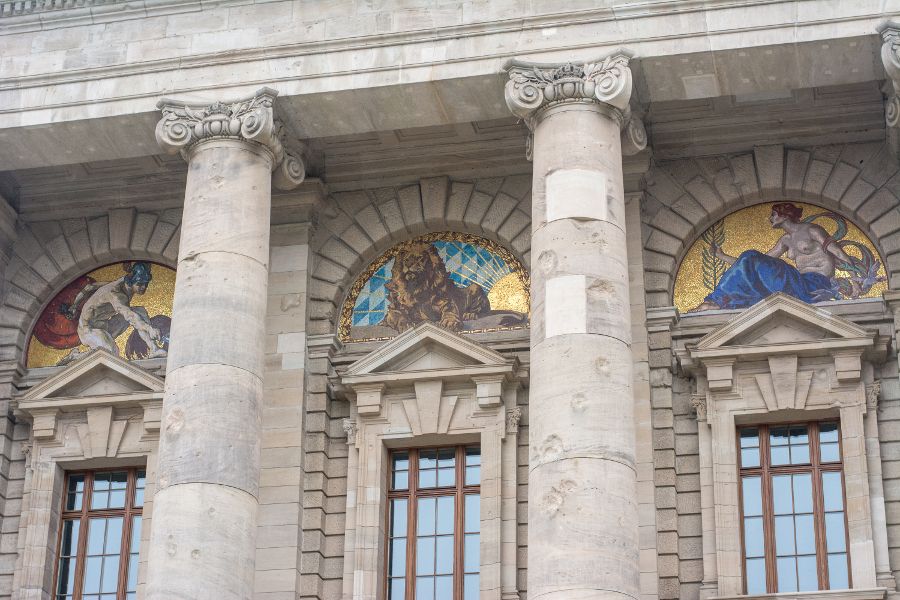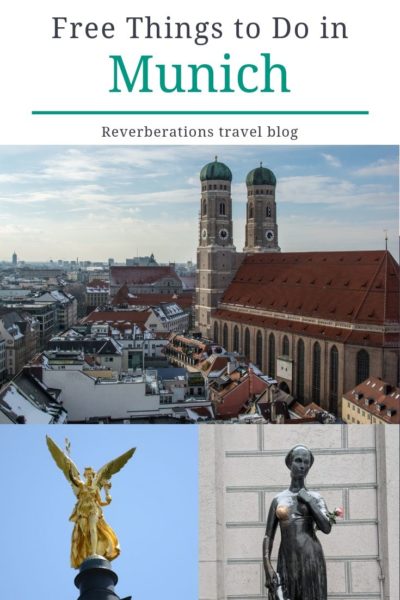Munich is famous for many things, but being free or low cost isn’t one of them. The Bavarian capital city is in high demand and, as any student of even an introduction to economics can you tell you, that equals high prices. There is no shortage of things to do and enjoy in Munich, from world-class museums to visits to a tempting Biergarten. But it can quickly add up. But why not supplement those expenses with some great free things to do in Munich? The city is full of wonderful spots to enjoy and things to do that don’t cost a single Euro. Here’s my list of 29 fun free things to do in Munich!
Read More: Looking for more Munich tips? Check out my favorite Munich tips and recommendations!
Stroll through Hirschgarten
A cozy spot in residential Munich, Hirschgarten isn’t just the largest Biergarten, or beer garden, in the world. It’s also a park. With athletic fields, ping pong tables, and playgrounds there is something for everyone at this truly family-oriented park. Frequently you’ll spot people cutting through the park on their way to or from work or families with small children getting some fresh air in Hirschgarten. You can even visit with a herd of deer (or Hirsch in German) that live in a fenced-in spot near the restaurant.
Watch the Glockenspiel
Every day of the week, visitors to Munich pack into Marienplatz to watch the Glockenspiel perform. With cameras and phones out and snapping away, the Glockenspiel enthralls watchers. Dating to 1908, the mechanism spins showing knights jousting and coopers dancing as the clock bells chime.
This occurs three times a day during summer and twice a day during the rest of the year. It’s a charming tradition, especially in today’s fast-paced digital life, that every visitor to Munich should see at least once.
See the Friedensengel
The golden angel standing atop a column on Prinzregentenstrasse is a popular landmark and worth visiting it. From her perch overlooking the city and the Isar, the Friedensengel (or Angel of Peace) has a large fountain before her. Called the Putti Fountain, it is the work of Munich-based sculptor Wilhelm von Rüman. From there are a series of stairs leading up to an observation area at the base of the column.
Dating back to 1896, the Friedensengel commemorates the quarter-century of peace following the Franco-German War. The angel is the work of Heinrich Düll, Georg Pezold, and Mark Heilmaier. Six meters tall and gilded bronze, the angel is Nike of Paionios. She stands, arm outstretched, on a 38-meter high column. Beneath the column is a mosaic-covered temple and statues. It pays tribute to German and Bavarian emperors, rulers and generals.
Stroll the Nymphenburg Canal
Extending out east from Schloss Nymphenburg and running throughout the castle estate is a canal system. The canals are only about a foot-and-a-half deep and in winter, when they freeze over, they’re a popular place for enjoying ice skating, ice hockey, and frozen winter sports. Regardless of the time of year, the path along the canal is a lovely spot for a stroll. Trees and residences line the path.
Pay Your Respects at Friedhof Bogenhausen
Just a quick walk from Englischer Garten and across the Max-Joseph-Brücke is the Bogenhauser Friedhof, or cemetery. This historic cemetery is a popular resting place for famous Germans. Visitors can pay their respects at the graves of filmmakers Rainer Werner Fassbinder and Helmut Dietl, film producer Bernd Eichinger and author Oskar Maria Graf, among others. Each grave is very individualized and there are many lovely plants. It’s a very peaceful spot and definitely Munich off the beaten path, especially for foreign tourists.
Visit Blutenburg
Just west of Schloss Nymphenburg, less than three miles by foot, lies the often overlooked Schloss Blutenburg. Complete with a moat, the original castle served as a hunting lodge for Duke Albert III in the 15th century. Due to fire, war, and abandonment over the centuries, the castle has been built and rebuilt. Also on the site is palace chapel.
Today the castle houses an international youth library. But the chapel and the grounds are open to the public and can be visited at no cost.
Visit Schloss Schleißheim
Less than an hour north of Munich and right off the S-Bahn line that leads to and from the airport sits Schloss Schleißheim. There visitors can find three massive and magnificent baroque palaces surrounded by formal gardens and a lovely park. Go for a visit just to stroll the property, enjoy a wonderful day out and take in the view of Munich.
Admire the Architecture in Haidhausen
No one could ever accuse Munich of being an unattractive city. Simply everywhere you look there are beautiful buildings with that special Bavarian charm. But, the city’s Haidhausen district is not only extremely trendy and popular but also very beautiful. Wiener Platz is perhaps the most remarkable with historic buildings surrounding the square which hosts a market. A maypole stands proudly in the center of the cobblestone square for a little extra reminder that this is, indeed, Bavaria.
Check out the surfers hang-ten at the Eisbach
Visitors and locals alike flock to the Englischer Garten to rest, relax and unwind in the park or at one of the park’s several Biergarten. But on the southern edge near the Bavarian National Museum spectators line the bridge and banks of the Eisbach to watch surfers, one of the most popular free things to do in Munich. That’s right: deep in Bavaria within sight of the Alps is an outdoor surfing oasis. A peculiarity of the way the Eisbach flows into the park and over rocks leads to a perfect wave morning, noon, and night. Year-round surfers don wetsuits, boards under their arms, and wait their turn in the wave.
Stroll Olympiapark
Munich famously hosted the 1972 Summer Olympics and visitors to the city can still enjoy the Olympic Park that was constructed. From the Olympicturm, or Olympic Tower, that can be spotted from a distance to the architecturally unique Olympic stadium, there’s much to see at the Olympiapark. When you tire of sightseeing, enjoy the green park by enjoying the view or going for a walk.
Marvel at the Allianz Arena
The world-famous Allianz Arena opened in 2005 and has since been the home of FC Bayern München. The stadium seats 75,000…if you happen to have a ticket. But it’s free to visit the stadium and marvel at it from the outside. Designed by architects Herzog & de Meuron, the exterior is constructed with inflated ETFE plastic panels. At night, the panels are lit up. If Bayern has a game, you’ll find them to be red. If the stadium is hosting the German national team, it’ll be white. During the holidays it adopts a more fun lighting scheme. St. Patrick’s Day sees the Allianz Arena go green while it’s also mimicked the American flag, too.
Reflect in Munich’s Churches
Munich’s churches are a popular spot and not just for the pious. Beautiful architecture, art, and history await visitors inside the churches. The Frauenkirche is without a doubt Munich’s most iconic church. Maybe it is even its most iconic building. The church’s twin towers with their green-domed roofs are an important part of the city’s skyline. In fact, to this day buildings may not exceed the height of the Frauenkirche. And the award for the city’s most lavish and elaborate church goes to the Asamkirche. All of the city’s churches are worth a visit, whether it’s for reflection or sightseeing.
Spend a Day at One of the Free Museums in Munich
While most of the city’s museums do charge a fee to enter, there are a number of free museums in Munich. Additionally, there are also some museums that only charge a single Euro on Sunday. There’s no excuse not to support these local gems and expand your own knowledge at the same time.
Free Galleries & Museums in Munich
- Sammlung Goetz
- Bavarian State Collection for Paleontology and Geology
- Bavarian State Library
- Artothek & Bildersaal (some exhibits do charge an entrance fee))
- Lothringer13 Halle
- MaximiliansForum
- Münchner Kaiserburg
- Museum für Abgüsse Klassischer Bildwerke München (Museum for Castings of Classical Sculptures)
- Rathausgalerie (City Hall Gallery)
Explore Nymphenburg Palace & Park
On the western edge of Munich lies Schloss Nymphenburg. The beautiful palace was home to countless royalty and is the birthplace of “mad” King Ludwig II. Manicured gardens, canals, and ponds surround the palace and small palace buildings dot the property. While you’ll have to reach for your wallet to enter the palace, you can visit the park grounds for free. Miles of paths are all around the grounds and continue into the increasingly more forest-like terrain. You might even see a deer sneaking through the woods.
The westernmost part of the park is where you’re more likely to ditch the tourists and find the locals out for a stroll: exercising or catching up with friends. A favorite spot of mine is the pond right outside of the Badenburg building. Grab one of the benches or sit at the temple Monopteros to watch the swans, ducks and other birds in their natural habitat. Nymphenburg is definitely one of my favorite free things to do in Munich.
Enjoy Munich’s Free Music Festivals
Munich is alive with the sound of music and that includes free music festivals throughout the year. Opera For All offers a free open-air concert and a free opera live broadcast from Max-Joseph-Platz. There’s also the 24-day-long summer festival Theatron that features music of a variety of genres and is the world’s longest music festival.
Visit Odeonsplatz & Feldherrnhalle
On the one hand, Odeonsplatz is an urban square just north of Marienplatz with international inspiration. The square itself draws on Rome’s Palazzo Farnese. The Feldherrnhalle monument, on the square’s southern edge, is modeled after Florence’s Loggia dei Lanzi. It’s no wonder that Munich is often referred to as Italy’s northernmost city. It’s a classic break in the downtown’s Altstadt, or old city.
But, like so much of Munich, Odeonsplatz is steeped in history. During the Beer Hall Putsch in 1923, Adolf Hitler (then leader of the National Socialist German Workers’ Party) and others tried to make a grab for power. The coup ended in a shootout with police in Odeonsplatz at Feldherrnhalle. Four Bavarian police officers were killed along with sixteen Nazis. Today, there are plaques remembering the police officers at the site.
Recharge in Marienhof
Since rebuilding much of Munich after World War II, Marienhof has been a transitional spot. The one-block square green spot directly behind Marienplatz is at the heart of the city’s Altstadt or old town. Currently, the spot is a construction and archeology site as the city adds the 2. Stammstrecke, or second local line on the S-Bahn (suburban rail). But once it returns to its former glory, it’s a convenient spot to sunbathe, relax, people watch or enjoy a picnic.
Explore Marienplatz
With its massive neo-gothic town hall, its more moderate but colorful late-gothic town hall, and the Glockenspiel, Marienplatz is quite literally the heartbeat of Munich’s Altstadt. It’s difficult to envisage a visit to Munich that doesn’t include a visit to Marienplatz — even if that means cutting through the square on your way to somewhere else.
The square is richly decorated with plenty of buildings, statues, and fountains to explore up close. Marienplatz is a landmark for a reason. Be sure to wander into the courtyard of the Neues Rathaus for even more architectural beauty. The gargoyle rain spouts are a favorite of mine!
Soak up the sun in Englischer Garten
Englischer Garten is the backyard of Munich’s residents. It’s one of the world’s largest urban parks, beating out even Central Park. For that reason, it can be overwhelming to navigate. The meandering paths can be confusing at times. Whether you’re looking for sports or leisure, Englischer Garten has a spot or a bench for you. The park’s Chinesischer Turm is a popular landmark and attraction. The park is definitely one of the most popular free things to do in Munich.
Wander through Viktualienmarkt
Just off of Marienplatz sits Munich’s famous open-air market. Since 1807, Viktualienmarkt has served shoppers daily and it’s easy to see why. Take a visit to Viktualienmarkt to stroll between the stalls selling fresh fruits, vegetables, meat, and other foods as well as crafts, flowers, and more. In true Bavarian style there’s even a Biergarten. The beer on tap changes daily, rotating between the local breweries. Viktualienmarkt is a real mix of locals and tourists alike.
Visit the Bavaria Statue and Hall of Fame
The lady Bavaria stands strongly, confidently on the western edge of the famous Theresienwiese. She has her arm outstretched overhead with a wreath in hand while at her feet sits sit a lion loyally. Behind Bavaria is a 19th-century pantheon, the Hall of Fame (Rumeshalle), that contains busts of notable Bavarians. The open-air Hall of Fame is free to explore, where you can see the busts up close and get an impressive view over the Wiesn, the grounds that host so many of Munich’s events throughout the year with Oktoberfest undoubtedly being the most famous.
The Bavaria statue itself is actually a tower, with a tight spiral staircase inside leading to a view out of peepholes in her head. While the tower costs a fee, it’s free to admire the beautiful artwork and casting from the outside.
Watch FC Bayern or TSV 1860 Train
Getting your hands on tickets for an FC Bayern Munich game can be difficult and expensive. But instead of watching the team play a game in the Allianz Arena with more than 60,000 other people, why not attend a practice session? FC Bayern regularly holds training sessions that are open to the public at their Säbener Str. facility. Not only will you get to see the stars training, but some of the players may also even sign autographs or take photos with fans.
One of Munich’s other football (or soccer, if you prefer) teams, TSV 1860, also do open training sessions. Be sure to support the city and not just the teams!
Zoom into BMW Welt
BMW’s headquarters is perhaps Munich’s most unique building. It resembles the 4-cylinders of a car engine while the adjacent museum is a cylinder head. And rich next door to HQ and the museum, on the edge of Olympiapark, is BMW Welt, or BMW World.
BMW Welt is a free showroom and exhibition space. Gearheads can get a close-up look at some of the iconic brand’s newest and most popular cars and motorcycles. Fantasize about what vehicle you’d like to drive out with, get behind the wheel of some models, and get your photo taken.
Enjoy a Munich Festival
Throughout the year, Munich hosts some great festivals and events. In the late summer, there’s Oktoberfest, in early spring there’s Frühlingsfest, plus there are flea markets and many other seasonal Munich beer festivals. (Getting hassled by a Krampus in December and visiting the Christmas markets is on my bucket list, to be sure!)
Generally, there is no admission charge for the festivals. You’re free to attend and enjoy the atmosphere. Food, drink, and (if there are any) carnival games and rides will be pay as you go. So you’ll be in complete control over your wallet! The city’s festivals are one of the fun free things to do in Munich to experience some of the local culture.
Admire the Maximilianeum
The building on the hill, the Maximilianeum was to be the home of a gifted students’ foundation. Today it serves as the Bavarian state parliament building (Bayerischer Landtag).
Construction on the building began in 1857 under King Maximilian II of Bavaria. It was completed in 1874. The original design, led by architect Friedrich Bürklein, was to be of neo-Gothic style, much like other buildings along Maximilianstrasse. The plan changed, however, to more of a renaissance design under Gottfried Semper. The massive and impressive building has large windows that shimmer in the light. And it has many niches and alcoves in which sit busts, statues, and other lavish decorations.
Go Window Shopping
From designer brands with international name recognition to carefully handcrafted artisan items, Munich has a shopping street to appeal to everyone. And sometimes window shipping teaches you a lot about a place. Along Maximilianstr. you’ll find some of the city’s most luxurious and expensive shops. Extending west from Marienplatz the pedestrian-only Kaufingerstr. is more affordable as well as more touristy. Along Sendlinger Str. you’ll find more independent shops. But my favorite are the Tracht shops selling well-made traditional clothing like Dirndls and Lederhosen. The prettiest outfits are almost always the most expensive!
Walk Along the Isar River
The Isar River is much loved in Munich. Locals can often be found relaxing on its stone beaches along the river’s edge. Both sides of the river are green and full of trees. Park trails for walking, jogging, and exploring run along the border area on both sides. Maximiliansanlagen is the largest such park, encompassing both the Maximilianeum and the Friedensengel. on the western side of the river, the path is narrower but runs right along the Isar. The river and its green spots straddle the busy city and the quiet of nature.
Explore the Bayerische Staatskanzlei
Just off to the side of the lovely Hofgarten, with its Diana temple and crisscrossing flower garden, sits the Bavarian Chancellery behind a row of trees that obscures the view. The Bayerische Staatskanzlei, like much of Munich, is a blending of old and new. But unlike much of Munich, which was rebuilt to its pre-World War II status, the Staatskanzlei uses the commanding former Bavarian army museum building from 1905 with a striking addition from the late 1980s/early 1990s that sees wings of curved glass extending from either side of the original dome and columns.
Just before the building is a unique war memorial that was originally intended to honor the 13,000 soldiers from Munich that were lost during World War I. Located below ground level, visitors ascend flights of stairs and enter an open-air but covered pavilion that contains a sarcophagus with the remains of a soldier. Designed by sculptor Karl Knappe and architects Thomas Wechs and Eberhard Finsterwalder, the sobering memorial was dedicated in 1924 before being completed in 1928.
After World War II, as the city was rebuilding, the memorial was also rebuilt and updated to memorialize the tens of thousands of Munichers that were killed in action, missing in action, or victims of air raids.
Enjoy the Old Botanical Garden
While the city’s Botanical Garden that sits beside Schloss Nymphenburg is a beautiful spot and a great way to spend a day, it does have an admission fee. But from 1812 until 1914, the city’s botanical garden sat in Maxvorstadt just a couple blocks north of Karlsplatz. Now known as the Old Botanical Garden, it’s still worth visiting and serves as a small park. A large water fountain featuring Neptune is a central focal point of the park and the surrounding garden. To this day, the park is still home to some exotic species of trees! It’s a real reminder of its past and is perhaps one of the most relaxing free things to do in Munich.
Save this post for later with Pinterest!
All photos, as well as all opinions, are my own.
